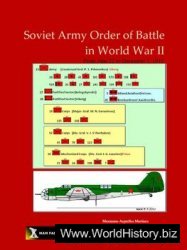As World War II came to an end in the Pacific, relations
between the government of Chiang Kai-shek in China
and its powerful U.S. ally had become frayed. Although
Roosevelt had hoped that republican China would be the
keystone of his plan for peace and stability in Asia after
the war, U.S. officials eventually became disillusioned
with the corruption of Chiang’s government and his unwillingness
to risk his forces against the Japanese (he
hoped to save them for use against the Communists after
the war in the Pacific ended), and China became a backwater
as the war came to a close. Nevertheless, U.S. military
and economic aid to China had been substantial,
and at war’s end, the Truman administration still hoped
that it could rely on Chiang to support U.S. postwar goals
in the region.
While Chiang Kai-shek wrestled with Japanese aggression
and problems of postwar reconstruction, the Communists
were building up their liberated base in North
China. An alliance with Chiang in December 1936 had
relieved them from the threat of immediate attack from
the south, although Chiang was chronically suspicious of
the Communists and stationed troops near Xian to prevent
them from infiltrating areas under his control.
He had good reason to fear for the future. During the
war, the Communists patiently penetrated Japanese lines
and built up their strength in North China. To enlarge
their political base, they carried out a “mass line” policy
(from the masses to the masses), reducing land rents and
confiscating the lands of wealthy landlords. By the end of
World War II, according to Communist estimates, twenty
to thirty million Chinese were living under their administration,
and their People’s Liberation Army (PLA) included
nearly one million troops.
As the war came to an end, world attention began to
focus on the prospects for renewed civil strife in China.
Members of a U.S. liaison team stationed in Yan’an during
the last months of the war were impressed by the performance
of the Communists, and some recommended
that the United States should support them or at least remain
neutral in a possible conflict between Communists
and Nationalists for control of China. The Truman administration,
though skeptical of Chiang’s ability to forge
a strong and prosperous country, was increasingly concerned
over the spread of communism in Europe and tried
to find a peaceful solution through the formation of a
coalition government of all parties in China.
The effort failed. By 1946, full-scale war between the
Nationalist government, now reinstalled in Nanjing,
and the Communists resumed. The Communists, having
taken advantage of the Soviet occupation of Manchuria
in the last days of the war, occupied rural areas in the region
and laid siege to Nationalist garrisons hastily established
there. Now Chiang Kai-shek’s errors came home to
roost. In the countryside, millions of peasants, attracted
to the Communists by promises of land and social justice,
flocked to serve in the PLA. In the cities, middle-class
Chinese, who were normally hostile to communism, were
alienated by Chiang’s brutal suppression of all dissent and
his government’s inability to slow the ruinous rate of
inflation or solve the economic problems it caused. With
morale dropping, Chiang’s troops began to defect to the
Communists. Sometimes whole divisions, officers as well
as ordinary soldiers, changed sides. By 1948, the PLA was
advancing south out of Manchuria and had encircled Beijing.
Communist troops took the old imperial capital,
crossed the Yangtze the following spring, and occupied
the commercial hub of Shanghai. During the next few
months, Chiang’s government and two million of his followers
fled to Taiwan, which the Japanese had returned to
Chinese control after World War II.
The Truman administration reacted to the spread of
Communist power in China with acute discomfort.
Washington had no desire to see a Communist government
on the mainland, but it had little confidence in
Chiang Kai-shek’s ability to realize Roosevelt’s dream of a
strong, united, and prosperous China. In December 1946,
President Truman’s emissary, General George C. Marshall,
sought and received permission from the White
House to abandon his mission, arguing that neither side
was cooperating in the effort. During the next two years,
the United States gave limited military support to the
Nanjing regime but refused to commit U.S. power to
guarantee its survival. The administration’s hands-off policy
deeply angered many in Congress, who charged that
the White House was “soft on communism” and declared
further that Roosevelt had betrayed Chiang at Yalta by
granting privileges in Manchuria to the Soviets. In their
view, Soviet troops had hindered the dispatch of Chiang’s
forces to the area and provided the PLA with weapons to
use against their rivals.
In later years, evidence accumulated that the Soviet
Union had given little assistance to the CCP in its
struggle against the Nanjing regime. In fact, Stalin periodically
advised Mao against undertaking the effort. Although
Communist forces undoubtedly received some assistance
from Soviet occupation troops in Manchuria, the
underlying reasons for their victory stemmed from conditions
inside China, not from the intervention of outside
powers. So indeed argued the Truman
administration, when in 1949 it issued
a white paper that placed most of the
blame for the debacle at the feet of the
Chiang Kai-shek regime (see the box
on p. 146).
Many Americans, however, did not
agree. The Communist victory on the
mainland of China injected Asia directly
into American politics as an
integral element of the ColdWar. During
the spring of 1950, under pressure
from Congress and public opinion to
define U.S. interests in Asia, the Truman
administration adopted a new national
security policy that implied that
the United States would take whatever
steps were necessary to stem the further
expansion of communism in the region.
|
|
||||||||
|
Www.WorldHistory.Biz
Sundries
 Contact Contact
|
 
10-08-2015, 17:16
The Chinese Civil War
  |
|||||||
 |
 |
 |
 |
|||||
|
||||||||

 World History
World History





